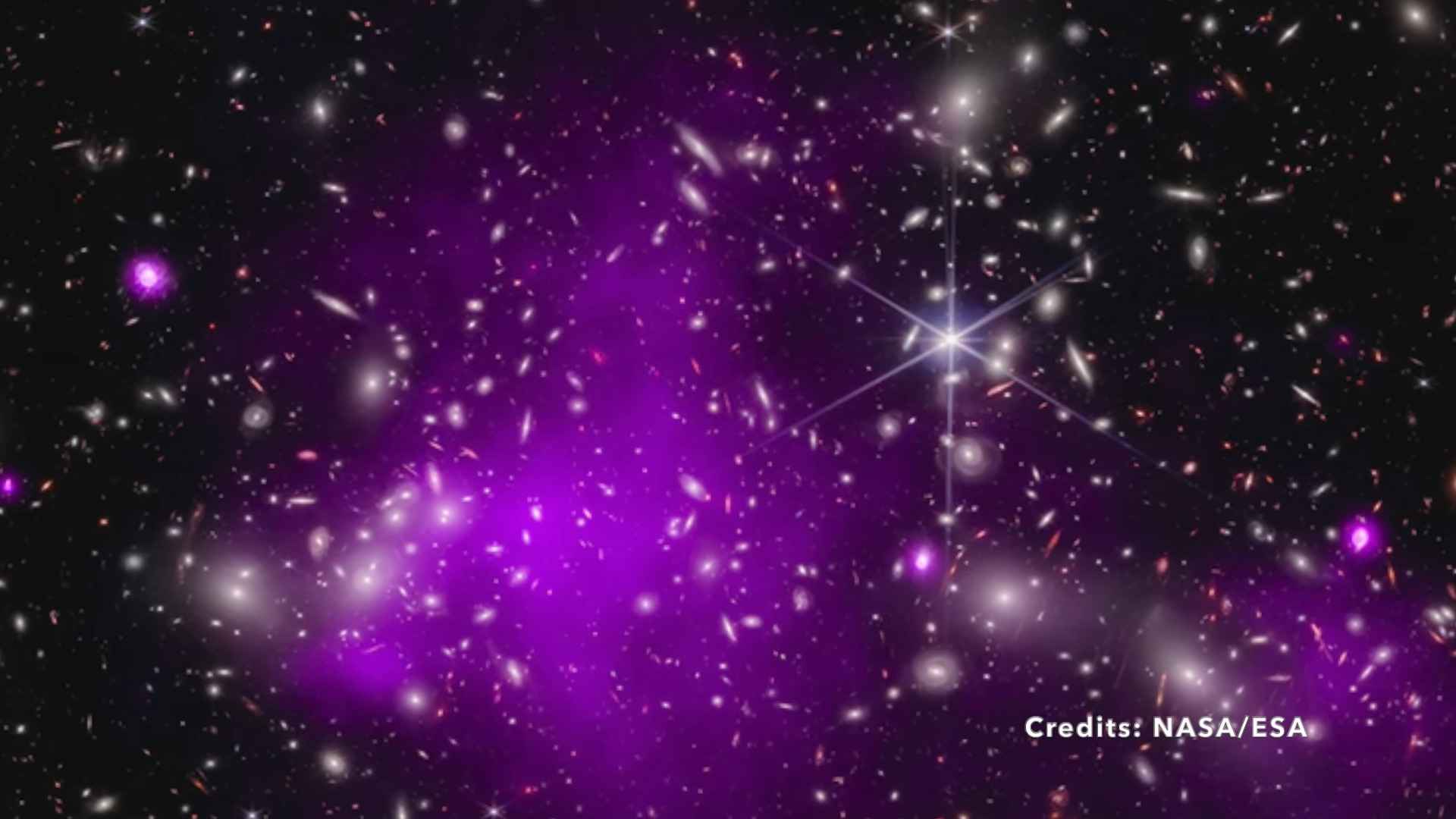Have you ever wondered what the universe would look like if you could unwrap it like a present? Well, NASA just gave us a sneak peek into the cosmic gift box, and it’s nothing short of breathtaking. The James Webb Space Telescope, working in tandem with its celestial partner, the Hubble Space Telescope, has gifted us a mesmerizing view of the universe in what can only be described as a celestial “Christmas tree” display.
A Cosmic Collaboration:
James Webb and Hubble Join Forces
In a cosmic collaboration that sounds like something out of a sci-fi dream, the James Webb Space Telescope and the Hubble Space Telescope have teamed up to capture a view of the universe that rivals the most intricate holiday light display. NASA recently unveiled a dazzling image, a result of combining infrared data from the James Webb and visible light observations from the Hubble.
The resulting picture is not just a snapshot of distant galaxies; it’s a masterpiece that captures the essence of the universe itself. The focal point of this cosmic artwork is a pair of colliding galaxy clusters, located a mind-boggling 4.3 billion light years away from our home planet. Known by the scientific moniker MACS0416, this celestial duo has earned the endearing nickname “Christmas Tree Galaxy Cluster” from the scientists who marveled at its polychromatic allure.
Unveiling the Christmas Tree Galaxy Cluster:
A Symphony of Colors in the Cosmos
Let’s take a moment to unwrap the layers of this celestial Christmas tree. Imagine the universe as a vast, shimmering tree adorned with galaxies of all shapes and sizes. This particular cluster, MACS0416, is like the star perched at the top, radiating a kaleidoscope of colors that stretch across the cosmic spectrum.
What makes this image truly extraordinary is the combination of infrared and visible light data. The James Webb Space Telescope, with its unparalleled ability to capture infrared wavelengths, provides a unique perspective that complements the Hubble’s visible light observations. It’s like seeing the universe in both day and night simultaneously.
As the Hubble focuses on the visible light, it captures the vibrant colors of the galaxies in the cluster. Meanwhile, the James Webb delves into the infrared realm, revealing details that would otherwise remain hidden. Together, they create a cosmic symphony of colors, showcasing the intricacies of the colliding galaxy clusters in a way that transcends the boundaries of traditional observation.
The Science Behind the Spectacle:
Galaxy Clusters in Action
Now, let’s dive into the science behind this celestial spectacle. The Christmas Tree Galaxy Cluster isn’t just a random gathering of stars and galaxies; it’s a dynamic scene of galactic interaction. Scientists anticipate that the two colliding galaxy clusters will eventually merge, forming an even larger cosmic congregation.
These galactic collisions are not rare in the vastness of space, but witnessing them in such exquisite detail is a gift that the James Webb Space Telescope and the Hubble Space Telescope have generously bestowed upon us. The intricate dance of celestial bodies, played out over billions of years, is captured in a single, awe-inspiring image.
The “Christmas Tree Galaxy Cluster” may sound whimsical, but its scientific significance is profound. Understanding the processes at play in these colliding clusters provides valuable insights into the formation and evolution of galaxies on a cosmic scale. It’s like peering into the cosmic history book, where each collision and merger tells a story of the universe’s constant state of change.
In conclusion, the collaboration between the James Webb Space Telescope and the Hubble Space Telescope has gifted us not just with a stunning image but with a deeper understanding of the cosmic ballet unfolding in the far reaches of space. This celestial “Christmas tree” is a reminder that, even in the vastness of the universe, the beauty of discovery and the magic of exploration continue to illuminate our understanding of the cosmos. So, let’s raise a metaphorical glass to the scientists and engineers behind these incredible telescopes, the architects of our journey into the mysteries of the universe. May the cosmic festivities continue, and may the James Webb Space Telescope keep unwrapping the wonders of the cosmos for years to come.


Leave a Reply